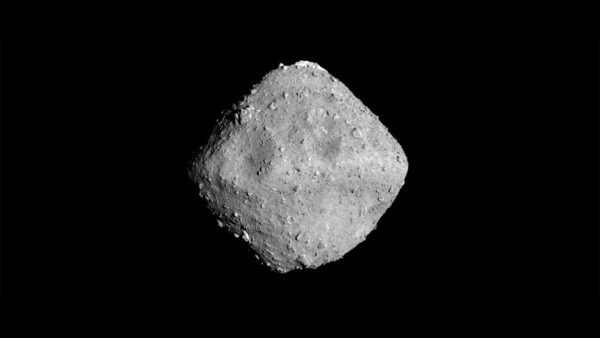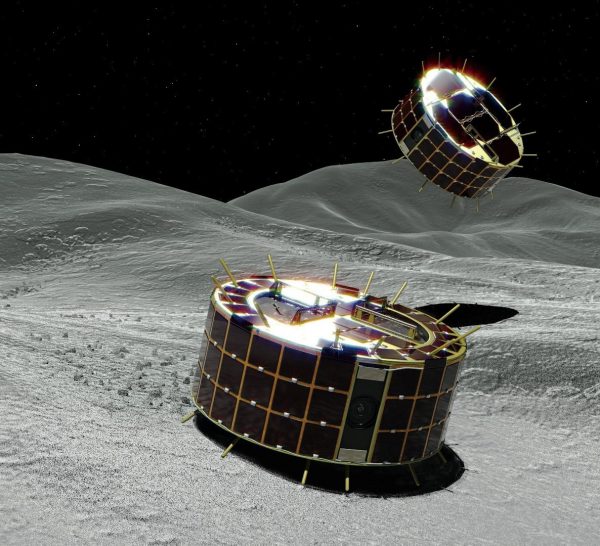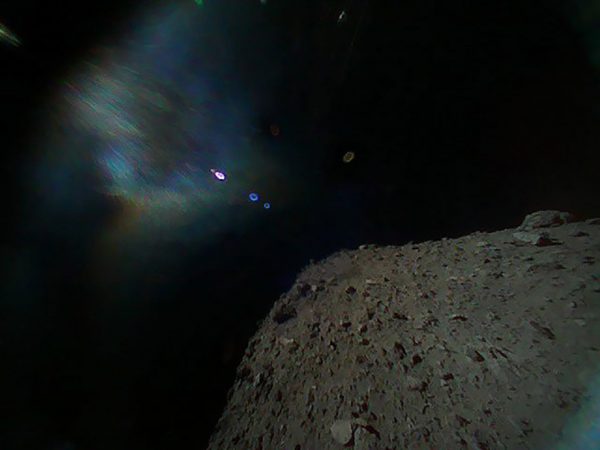
For the last 15 years, The Japanese Aerospace Exploration (JAXA) has been developing and sending probes to nearby asteroids in to hope to gather samples and data, learning more about the beginnings and composition of our solar system.
After an attempt in 2003 with the launch of spacecraft Hayabusa onto the asteroid 25143 Itokawa, it was the first spacecraft to land on an asteroid and return with a sample, however, failed to launch its detachable mini lander MINERVA.

JAXA prepared for another attempt with the Hayabusa2 spacecraft leaving earth in 2014 touching down on asteroid 162173 Ryugu in 2018. The uniqueness of this mission comes in the form of the small MINERVA-II1 Rovers engineered to encounter the unpredictable terrain of the asteroid. The rovers are identical and are of cylinder shape weighing 1.1 kg each, 18cm in diameter and 7 cm tall (similar to a robotic vacuum cleaner).
They contain a stereo camera, wide-angle camera, and thermometers and are powered by Solar cells and double-layer capacitors. Unlike the rovers we know on Mars the MINERVA-II1 rovers move by hopping across the asteroid surface.
Due to the rocky terrain and uneven shape they use a torque generated by rotating masses within the rovers. Hopping is with caution though, as asteroids have such a weak gravitational pull a hop too high can send them bouncing through space.

A short video sent back to Earth on the 23rd of September 2018, shows the mission as so far successful, with data and high definition images clearly showing the unusual landscape and geology of Ryugu. JAXA is certainly one to watch over the next few years with planned missions to Mercury and exploration of Martian Moons.





